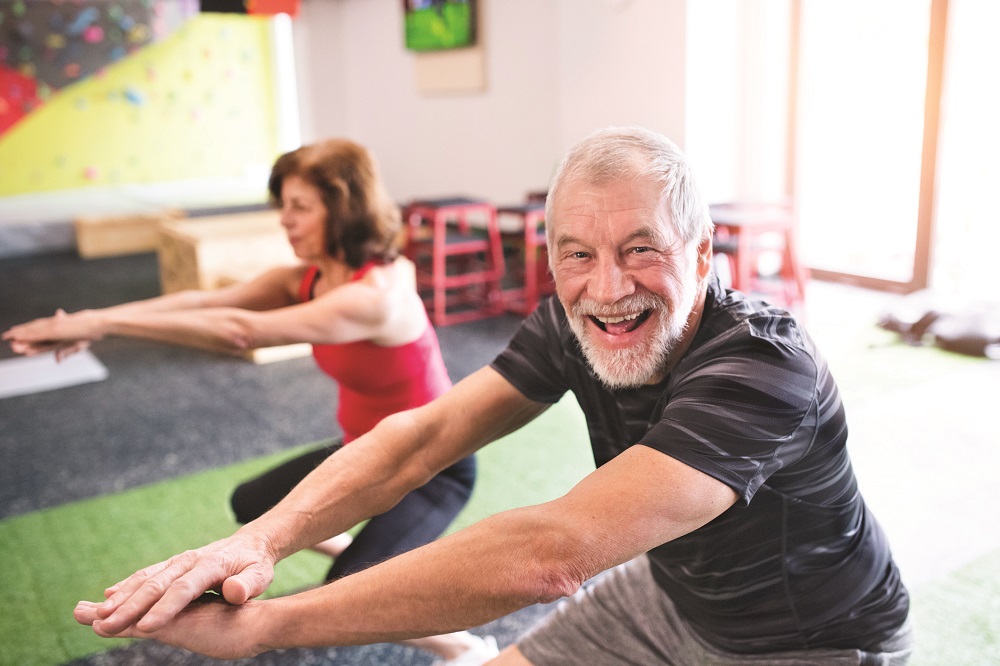If you have pain and stiffness in your knees that isn’t caused by a recent injury, you may have knee osteoarthritis (OA), often called “wear and tear” arthritis. OA pain is caused by thinning and wearing away of the cartilage that protects the bones of your knee joint. There are several telltale symptoms of knee OA: joint stiffness that affects one or both knees, morning stiffness that lasts about 30 minutes, morning knee pain and stiffness that is more noticeable with activity, especially going up stairs or bending up and down, and knee pain and stiffness that gets better with rest and swelling that responds to ice and nonsteroidal anti-inflammatory drugs (NSAIDs).
Treatment options
For some people, knee replacement surgery is necessary, but there are several treatments and lifestyle changes that may reduce your risk of needing surgery.
Exercise. After reviewing more than 600 studies, an expert panel of scientists determined that the strongest evidence supports using an exercise program to strengthen knee muscles and reduce stiffness, which can include supervised, home, or aquatic exercises.
Over-the-counter pain relief. There is also strong support for the use of topical or oral NSAIDs or acetaminophen (Tylenol) to improve pain and function. Narcotic medications (including tramadol) should be avoided.
Injections. The team found that the use of injections has only moderate scientific support. For about 10 percent of people, injecting a corticosteroid or a substance called hyaluronic acid (HA) into the knee joint (intra-articular injections) is beneficial. Steroids block inflammation that causes pain and stiffness, although they do not stop or reverse wear and tear.
HA is a substance found in the lubricating fluid inside the knee joint, called the synovial fluid. Synovial fluid decreases with OA, so adding HA may help restore fluid and lubrication, although this has not been strongly supported by clinical studies.
According to the guidelines, HA is not recommended for routine use. Steroids are recommended for only short-term relief of pain and swelling.
New questions about injections
Since the guidelines were issued, two new studies put the use of steroid injections into question. In November 2022, two studies presented at the annual meeting of the Radiologic Society of North America (RSNA) suggested that steroid injections might make knee OA worse. Both studies used data from an ongoing observational study of 5,000 people with knee OA, called the Osteoarthritis Initiative. Over the past 14 years, the study has been keeping track of the treatments of these people and taking imaging studies of their knees to record how their osteoarthritis is progressing over time.
All the patients in the study were matched for age and severity of their osteoarthritis. Over two years, both studies found that patients getting steroid injections did worse than patients without any injections and those getting hyaluronic acid injections.
The studies looked at only a small section of the total number of people in the Osteoarthritis Initiative. There were fewer than 300 people in each study. These types of studies, called longitudinal studies, look back on already collected data. They are not as strong as “gold standard” randomized controlled trials. Studies like these and others are considered when the American Academy of Orthopaedic Surgeons updates its evidence-based guidelines for nonsurgical treatment of knee osteoarthritis. Surgical treatments are reserved for people who have activity-limiting OA that has not responded to nonsurgical treatments.
Those studies may influence future guidelines on intra-articular injections if they are supported by other clinical trials. New guidelines are published every few years as new studies are evaluated. Dietary supplements like turmeric, ginger extract, glucosamine, chondroitin, and vitamin D, and other therapies such as massage, acupuncture, and transcutaneous electrical stimulation have too little research to be fully recommended by the scientific panel.


